How to add zentangle patterns to your paintings: In Kyoto
October 20, 2014 2023-05-09 17:36How to add zentangle patterns to your paintings: In Kyoto
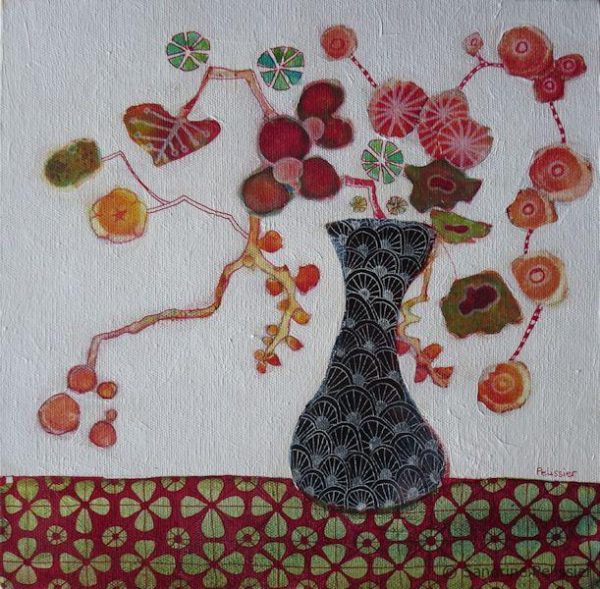
How to add zentangle patterns to your paintings: In Kyoto
If you like doodling and patterns, you can try incorporating zentangle and designs into your paintings. See how you can do it on a mixed media painting.
To paint a flower painting with zentangle patterns, you will need
- Canvas, I used 12 x 12 inches pre-streched canvas
- Krylon workable fixative
- Acrylic paint, I used Pebeo in titanium white and Payne’s grey
- Prismacolor Art Stix in black
- Sharpie White Oil marker
- Krylon workable fixative
- Watercolor paint, I used Yarka watercolors.
- Rubbing alcohol
- Fluid Acrylic, I used Liquitex Ink in yellow, orange and red
- Copic white Ink
- An Ink Pen
Here are the steps you can take to add zentangle patterns to your mixed media paintings
Start by painting an abstract background with fluid acrylic and alcohol
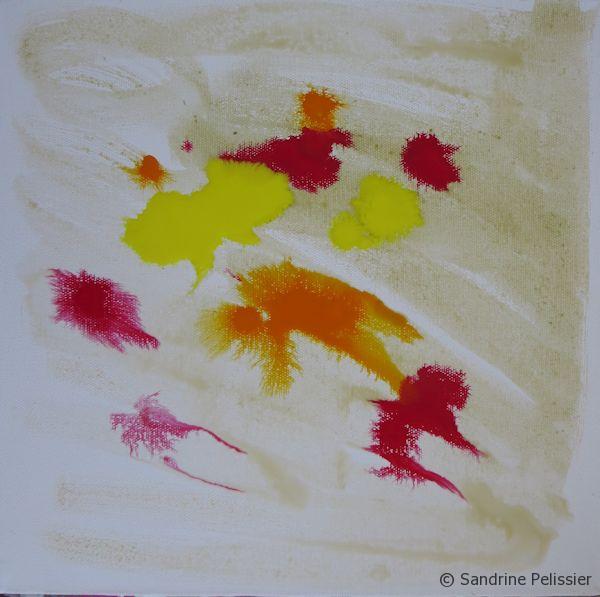
Add a few drops of fluid acrylic ink on the canvas.
I am a Blick Art Materials affiliate and I receive a small compensation for sales. That does not effect in any way the cost of the purchaser’s order but it helps me keeping the content of this blog free.

Golden High Flow Acrylics
Incredibly flexible, Golden High Flow Acrylics have an ink-like consistency that lends itself to a wide range of techniques painting, drawing, staining, glazing, inking, hand-lettering, airbrushing, and more. – High Flow Colors, Set of 10
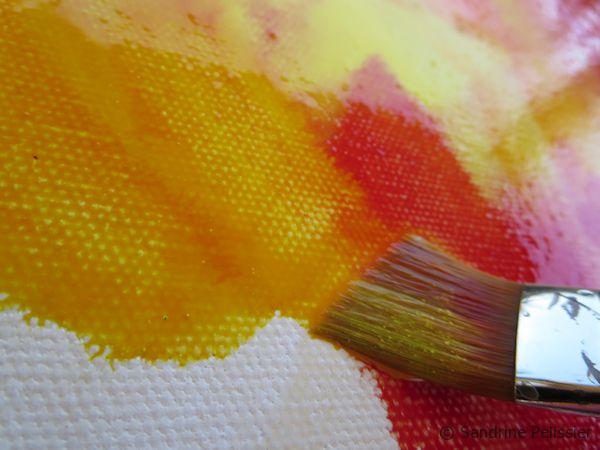
Spread them on all the surface with a brush.
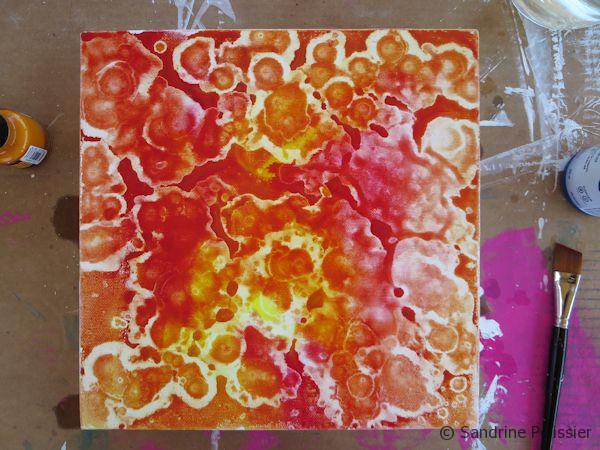
You can drip alcohol on the wet fluid acrylic to add more textures.
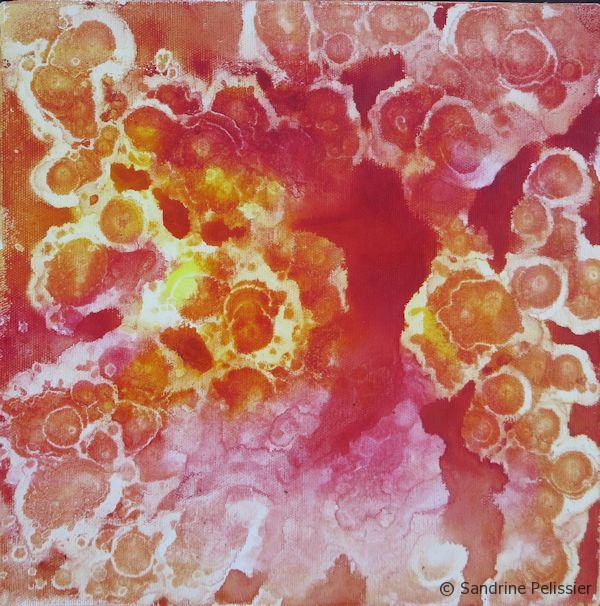
Let the paint dry for about 10 minutes
Finding shapes in the abstract background
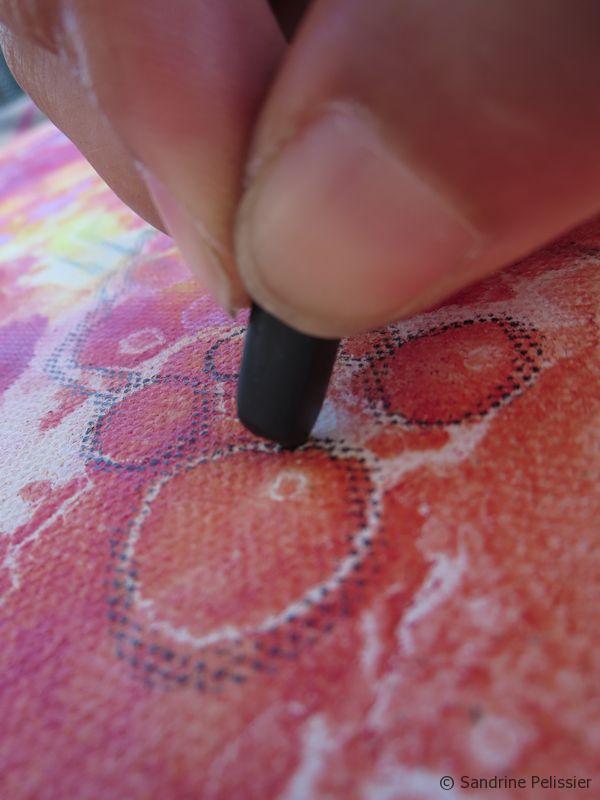
Find the shapes that will fit what you decided to paint in your abstract background, and outline them. Here I am using an Art Stix to outline these shapes.
I am a Blick Art Materials affiliate and I receive a small compensation for sales. That does not effect in any way the cost of the purchaser’s order but it helps me keeping the content of this blog free.

 |
Prismacolor Art StixPrismacolor Art Stix are artist-quality woodless colored pencils for every level of expertise. Especially suited for color coverage of large areas, Art Stix offer a bold, smooth laydown of color. |
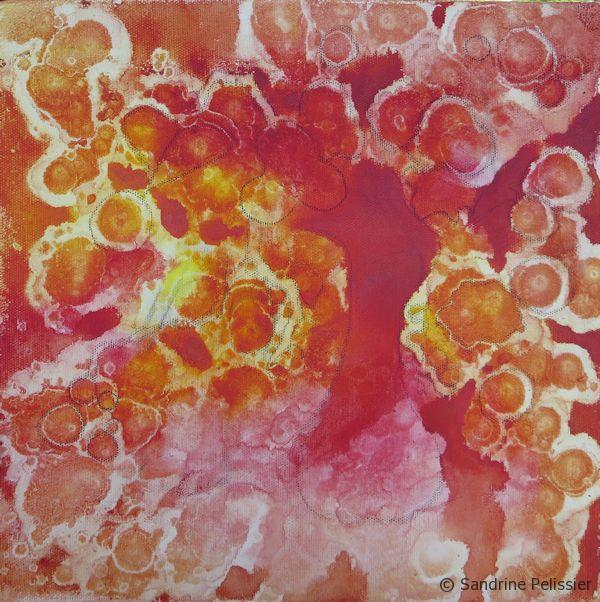
Once all the shapes you want to keep in color have been outlined, you can go to the next step.
Painting the negative space with white Acrylic paint

Paint all around the shapes you outlined, that is the negative space with white Acrylic.

Your painting will look something like that.
Adding contrast and patterns
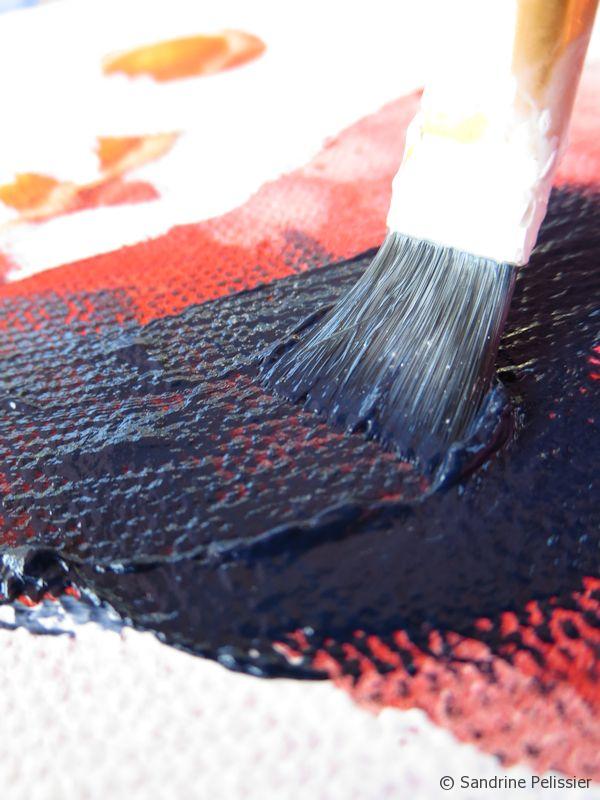
You can add more contrast by painting some areas with darker colors, here I am painting the vase darker with Payne’s grey Acrylic so it stands out more on the picture.

To add designs, you can either use markers (make sure they are acid free, archival and water resistant) or use a Pen and ink. Here I am using copic white Ink.
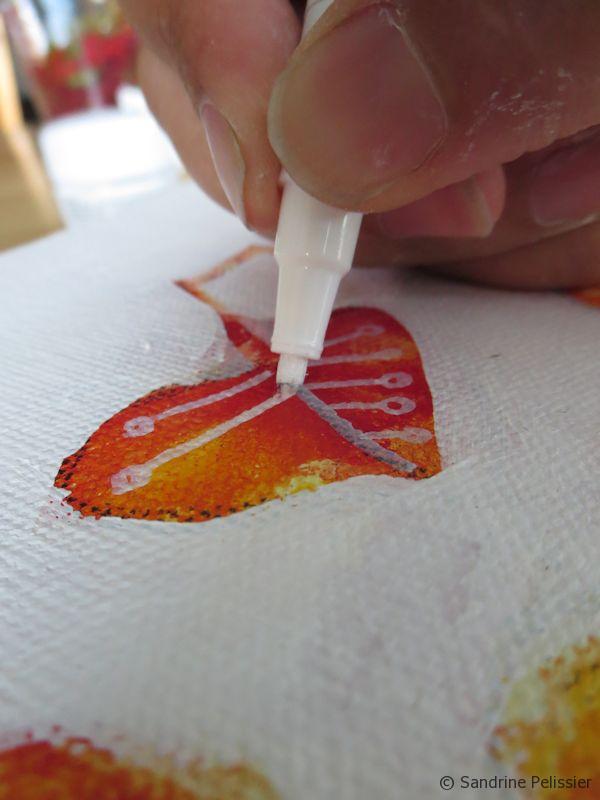
You can also add designs with a Sharpie White Oil marker
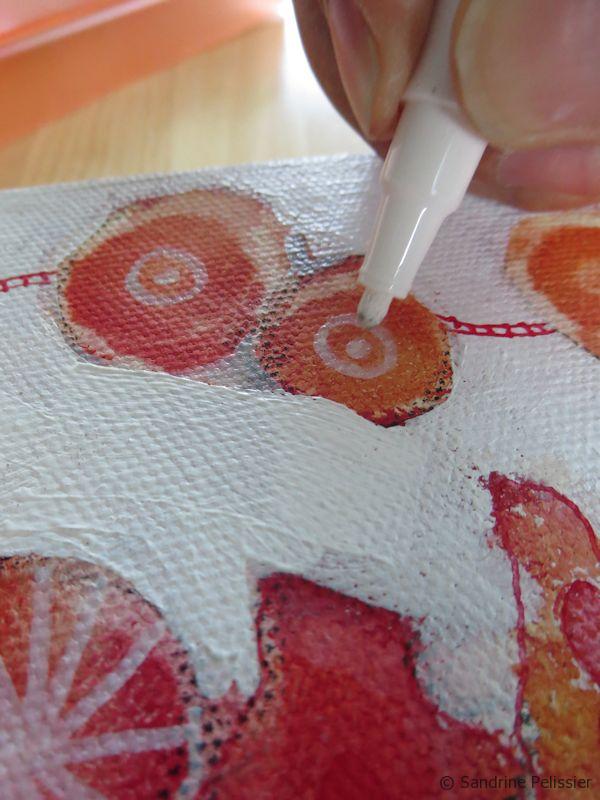

You can change the color of the ink while adding designs and make it match the colors of your painting.
I am a Blick Art Materials affiliate and I receive a small compensation for sales. That does not effect in any way the cost of the purchaser’s order but it helps me keeping the content of this blog free.

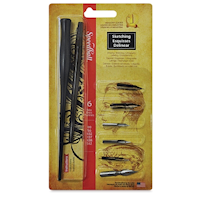 |
Speedball Sketching Project SetThis calligraphy pen and nib set gives you the tools needed to create beautiful works of art. Ideal for drawing, crosshatching, lithography, and fine details. Includes two plastic pen holders and six nibs. |

Take time to stop in the process and evaluate your work, here I decide that I want to incorporate a few more colors.
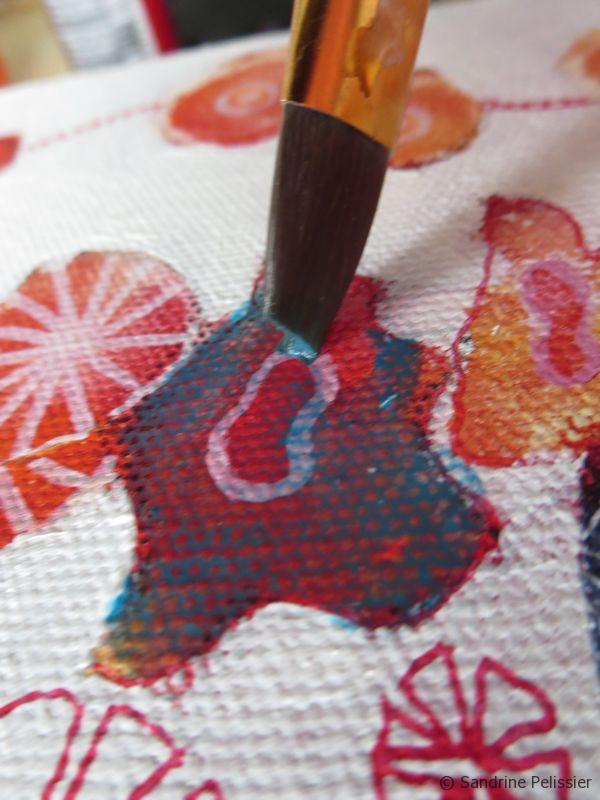
You can paint a few areas, either with fluid acrylic or with watercolor
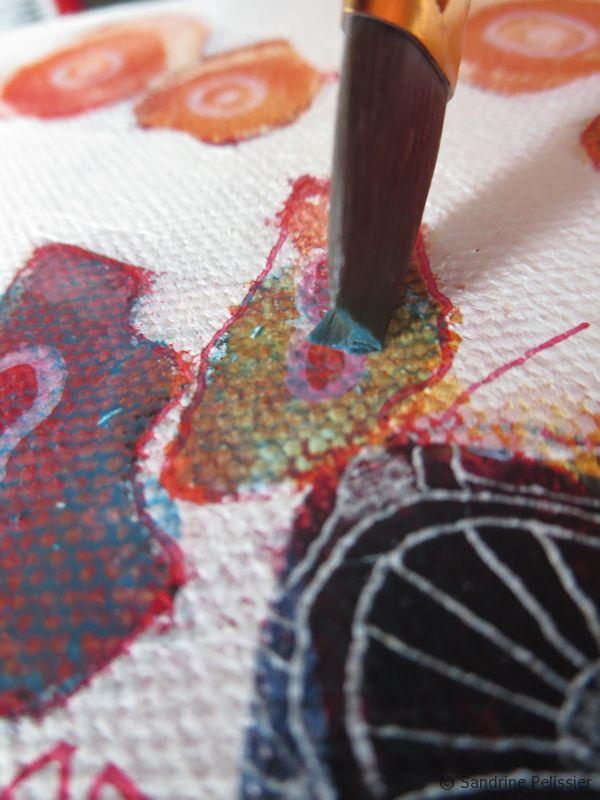
Watercolor is great because if you don’t like the result you can wipe it off so that is a great way to try new colors combinations.
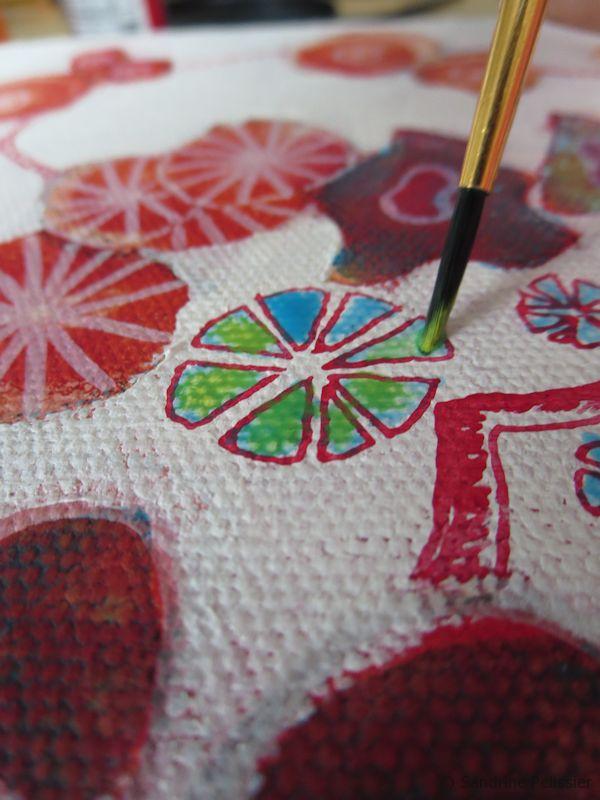
For example here I changed my mind and changed that blue on the flower into green.

When painting with watercolors on canvas, you will need to fix them before varnishing or painting over with a brush as they would lift from the canvas.
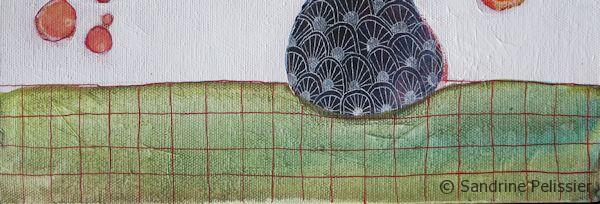
For more complex designs you might need to draw a grid. If that grid can stay visible, so it with the ink, if you want the grid not to show after you are done with your design, do it with Nupastel or graphite.

You could draw the grid with rulers, I personally like better a more organic, imperfect look.

Keep working on your design.Here I did draw the outlines with the pen and did fill the spaces with a small brush.

When everything had time to dry, paint the sides with white acrylic and apply a layer of varnish.
I am a Blick Art Materials affiliate and I receive a small compensation for sales. That does not effect in any way the cost of the purchaser’s order but it helps me keeping the content of this blog free.

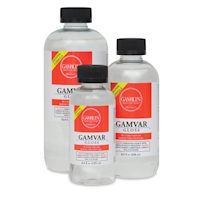 |
Gamblin Gamvar VarnishGamvar is a synthetic resin gloss varnish developed by conservators at the National Gallery. It can be used on acrylic paintings as well as oils. Gamvar is a synthetic resin varnish with a high refractive index similar to that of natural resins.
|




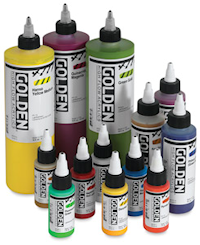
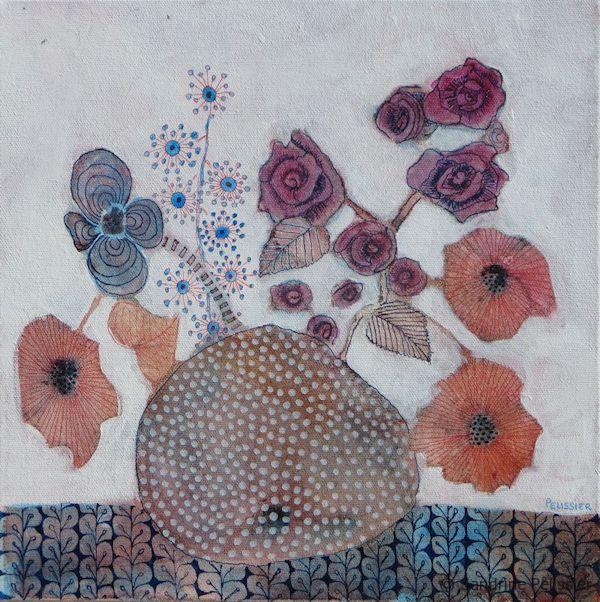
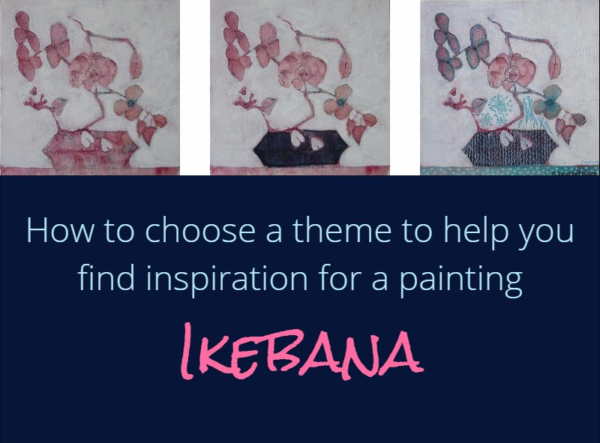
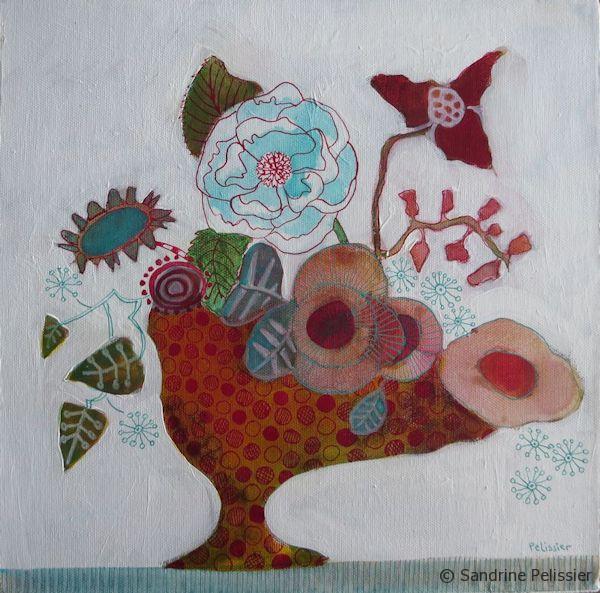
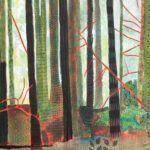
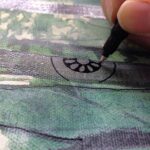

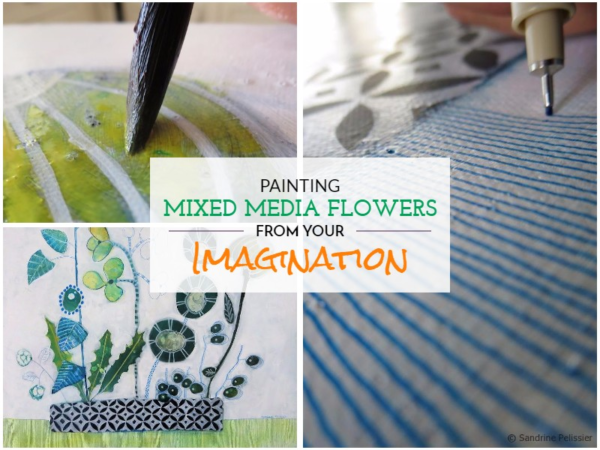
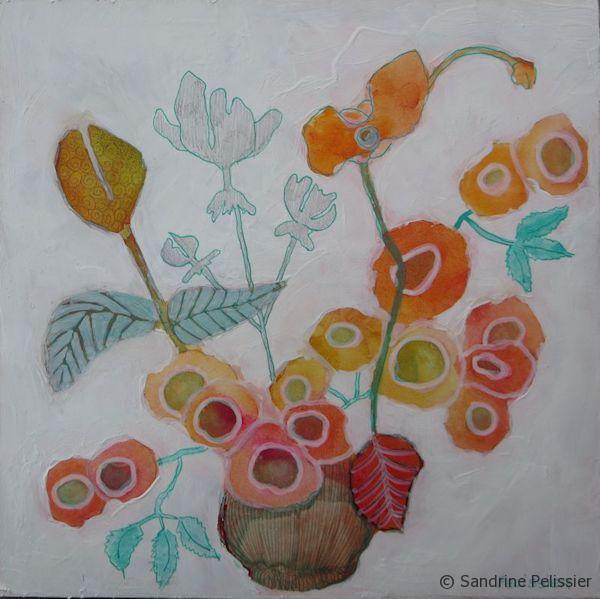
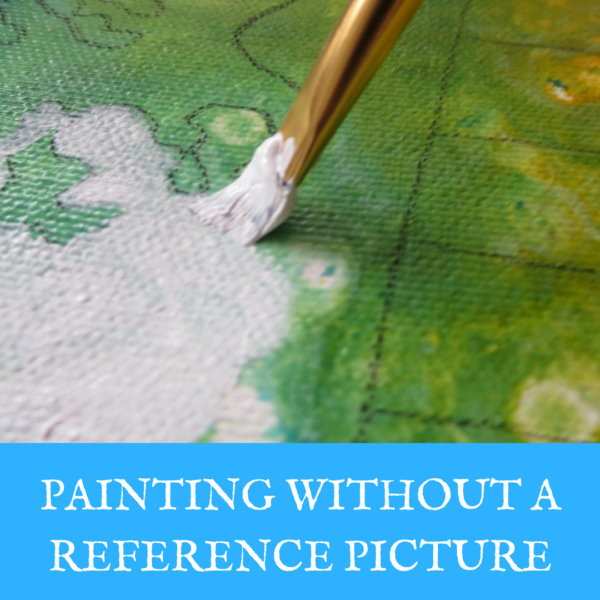

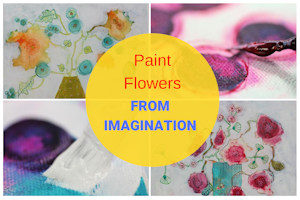
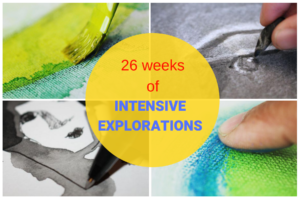

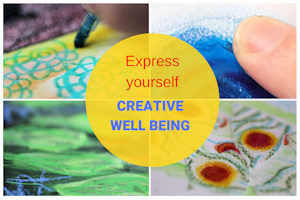
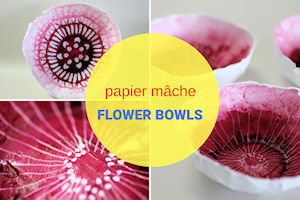
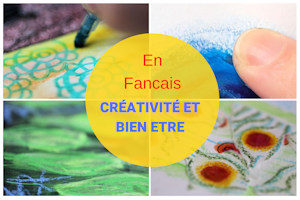

Comments (6)
Janet Finkelstein
HI Sandrine
I love your art. I was planning to do some Zentangle with my Acrylic paintings, so I googled it and your site popped up. I had thought I’d draw my Zentangles on the canvas with a Liquitex Black Paint Marker, so I bought one but haven’t used it yet. Have you ever used on or do you always use a Sharpie marker? I also like the idea of using some alcohol with your painting to give it some texture. Thank you so much for sharing. Take care, Janet
Sandrine Pelissier
Thanks Janet, I am glad my site popped up 🙂
I have not tried the Liquitex paint marker but would be very interested in knowing how it worked for you.
I am avoiding using sharpies as they are not light fast and acid free, except of you are using their line specifically designed for art. They have a great selection of oil based and water based markers. I am also using Sakura Pigma Micron markers or a dipping pen and ink:
https://paintingdemos.com/drawing-patterns-with-a-dipping-pen-and-ink/
Thanks for your kind comments:)
Barbara
Oh – my God, these paintings of yours are so beautiful, they break my heart! Thank you.
Sandrine Pelissier
Thanks again, I am glad you liked the paintings 🙂
jann parkes
Thank you for sharing this process.
I am a lover of fine line patterns, meandering lines and intuitive painting. ….just had never thought of combining these in one artwork.
You mentioned sealing the watercolour areas before vanishing etc. Do you use a spray sealer for this purpose over just the water colour areas? Does that spray effect the final vanishing process?
Thank you.
Sandrine Pelissier
Thanks Jann, I am glad you enjoyed this post!
Yes, I usually use Krylon workable fixative before varnishing if I am not totally sure that nothing will smudge. Then I varnish the painting with liquid varnish and a brush. Spraying varnish on the finished painting would work too.
Sometimes I am spraying the first layer of varnish, leave it to dry and then brush a second layer of varnish, this is another possibility.